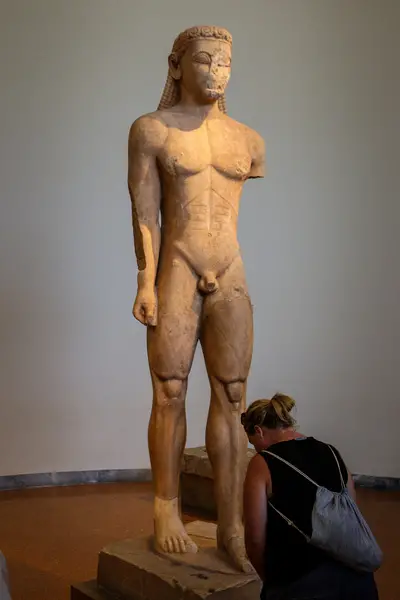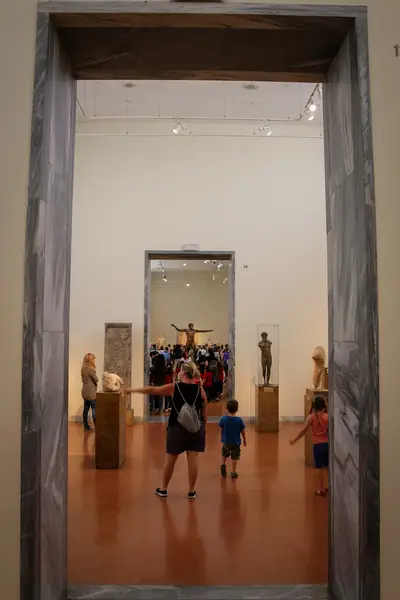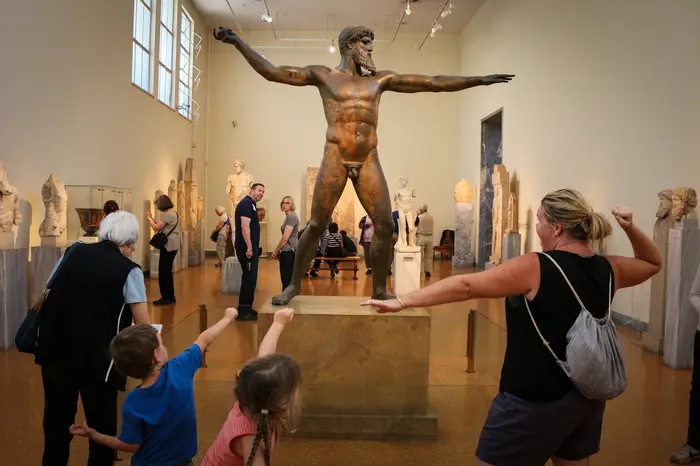Known as the cradle of Western Civilization, birthplace of Socrates, Sophocles, and Pericles, and home to the Acropolis or the Parthenon just to mention a few of its famous antique ruins, Athens has become over the centuries an attractive capital city that exquisitely combines its rich historic and cultural past with the vibrant buzz of modern life.
The sprawling city of Athens is established among seven historic hills and surrounded by remarkable mountains. It is considered one of the most beautiful cities in Europe and an attractive destination for culture and food lovers. There’s so much to see and do in Athens that it’s impossible to feel bored. From admiring the ancient ruins to shopping at high-end boutiques, falling in love with breathtaking sunsets, and eating the most delicious meals, the Greek capital will definitely seduce you.
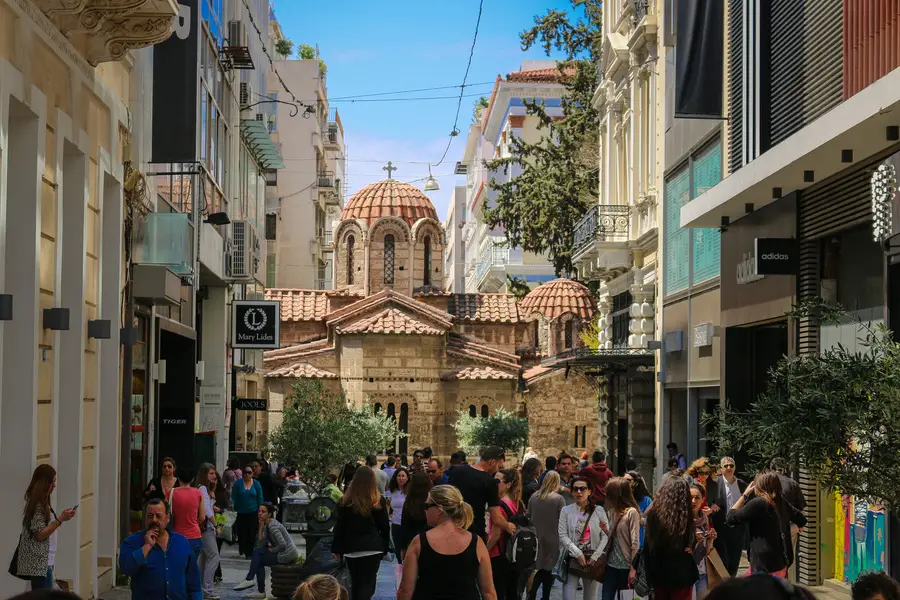
After reaching the country by plane, the capital is not far away from the airport. Renting a car is a great idea as it makes it easier to explore the surrounding areas on day trips and visit neighborhoods that may be more distant to explore on foot. There are many stunning places and towns just a few kilometers away and it’s a pity that you miss them just because you can’t book any bus or shuttle transport arrangement! You can find the major car rental agencies of course and choose the car that is more comfortable for you. If you are American and renting a vehicle is in your plans, you can save money and time by purchasing a policy to cover your rental while you’re still at home and show it to the agent at the desk. You can find an affordable insurance policy here.
Athens is a captivating city. Here are some of the highlights you can’t miss on a trip to the city.
The Acropolis
Visiting the Acropolis is probably the main reason why most people would love to travel to Athens. It’s not only the most famous hill in the Greek capital, it’s considered the highest point in the spirit of ancient Greek culture. It’s the area where some of the most important Greek ruins are located that remind us of the glorious past of the Greek civilization.
The architectural and cultural highlights that can be found there are the emblematic Parthenon with its rows of Doric columns, the Temple of Athena Nike, and the Erechtheion amongst others.
Considered the cradle of Western Civilization, it is visible from almost everywhere in the city. Listed as a World-Heritage site since 1987, it regularly undergoes restoration programs so it’s not strange to see it surrounded by scaffolding. Most of the original friezes and sculptures have been moved to the Acropolis Museum and replaced with casts.
Needless to say, thousands of visitors gather in the Acropolis to admire the views from atop the hill and explore the stunning ruins. That said, it’s a good idea to visit it as early in the morning as possible.
Admission is free on the first Sunday of the month from November to March and there’s a combo ticket that allows entrance to the Acropolis and six other sites within five days. Fortunately, tickets can be purchased online. With so many things to see and explore in a single area, it’s a great idea to take advantage of this. Beware that it can get extremely hot on summer days and there’s no shade available so remember to wear sunscreen and a hat to cover yourself up!
There are many streetside restaurants that offer rooftop dining from where you can enjoy not only some delicious Greek meals but also take in the breathtaking views of the Acropolis at night. The views are incredible, especially since the Temple of Athena Nike and the Parthenon are lit up every evening.
Those traveling with kids and teens who fear that visiting the Acropolis and the different ruins can be too much for them, too overwhelming, or too boring are advised to take a private family guided tour. They are usually kid-friendly and make the whole experience more interesting and appealing for them.
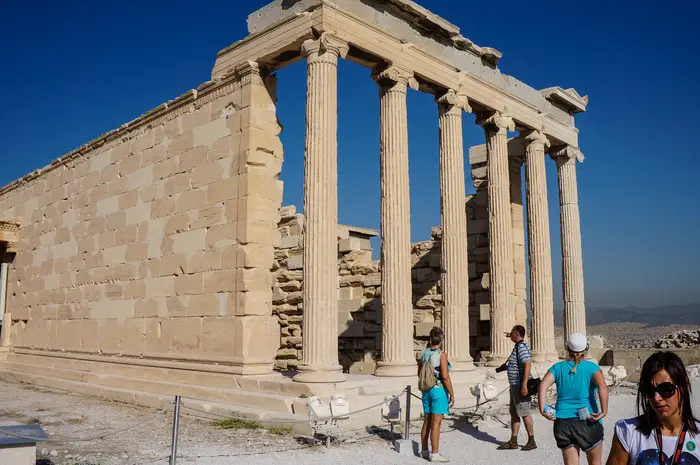
The Acropolis Museum
Located close to the Acropolis, on Dionysiou Areopagitou Street in the historical area of Plaka near the Holy Rock of the Acropolis, the Acropolis Museum is another remarkable highlight that anyone traveling to Athens just has to visit. It is home to one of the most valuable collections of Ancient Greek art in the world. It’s a really huge facility with 14000 square meters of exhibition space distributed on five floors and showcases over 4000 artifacts. As queues can be long, it’s a savvy idea to pick up the skip-the-line ticket that is offered online.
The collection covers the Archaic period to the Roman one, but the emphasis is made on the Acropolis of the V century BC as it is considered the apotheosis of Greece’s artistic achievement. Visitors to the museum can appreciate from ancient ruins beneath the building to the Acropolis itself.
As you enter the museum, you’ll step on a glass floor that reveals the ruins of an ancient Athenian neighborhood that were uncovered during the construction of the museum and had to be not only preserved but only integrated into the building plan of the museum.
On the ground floor, there’s the Gallery of the Slopes of Acropolis. It emulates the climb up to the sacred hill. Exhibits include painted vases and votive offerings from the sanctuaries where the gods were worshipped.
The first floor takes visitors to the Archaic Gallery, a forest of statues that mostly represent votive offerings to Athena. Most were recovered from a pit on the Acropolis, where the Athenians buried them after the Battle of Salamis. There are also bronze artifacts and figurines from temples predating the Parthenon. There are also five Caryatids, the maiden columns that held up the Erechtheion (the remaining one can be seen at the British Museum).
The top floor of the Acropolis Museum is probably the cherry of the cake, the exhibit that everybody wants to see and that nobody wants to miss: welcome to the Parthenon Gallery! A glass atrium houses the temple’s 160-m-long frieze. It is mounted following the layout of the building and you can stroll along, as though atop the columns, and examine the fragments at eye level. The frieze depicts the Panathenaic Procession. Between the golden-hued originals, visitors can appreciate replicas made in white plaster in lieu of the missing pieces: known as the Parthenon Marbles, and currently held in the British Museum.
The permanent exhibitions include, besides the already mentioned, the Athena statue, Color the Peplos Kore, and Athena Nike.
The Acropolis Museum is a must-visit place for anyone interested in Ancient Greece, its history, and culture and it’s the perfect complement after a visit to the Acropolis site.
The Parthenon
Standing majestically at the top of the Acropolis, the Parthenon is the most famous building in Athens and probably one of the main reasons why many people choose this Mediterranean country as a holiday destination. Built-in Doric architectural style, it is situated on the site of a former temple to Athena Parthenos and it’s decorated with sculptures that are considered great examples of Greek art.
The Parthenon had two purposes: be home to the great statue of Athena commissioned to Pericles and serve as the new treasury. The temple consisted of eight fluted Doric columns at either end and 17 on each side. To achieve perfect form, its lines were ingeniously curved to create an optical illusion so that they look straight.
The ceiling of the Parthenon was painted blue and gilded with stars. At the eastern end was the holy cella or inner room into which only a few privileged initiates could enter. It was the place where the statue of Athena Parthenos was built. The statue was made of ivory and gold with a wooden core and stood about 12m high on its pedestal and it was exquisitely decorated. Unfortunately, in AD 426 the statue disappeared after it was taken to Constantinople.
The Parthenon is today in the XXI century, one of the most remarkable sites in Athens and a clear symbol of Athenian democracy and western civilization. It has to be said, however, that the building is not complete. The original friezes can be admired at the Acropolis Museum and the Statues can be seen at the British Museum.
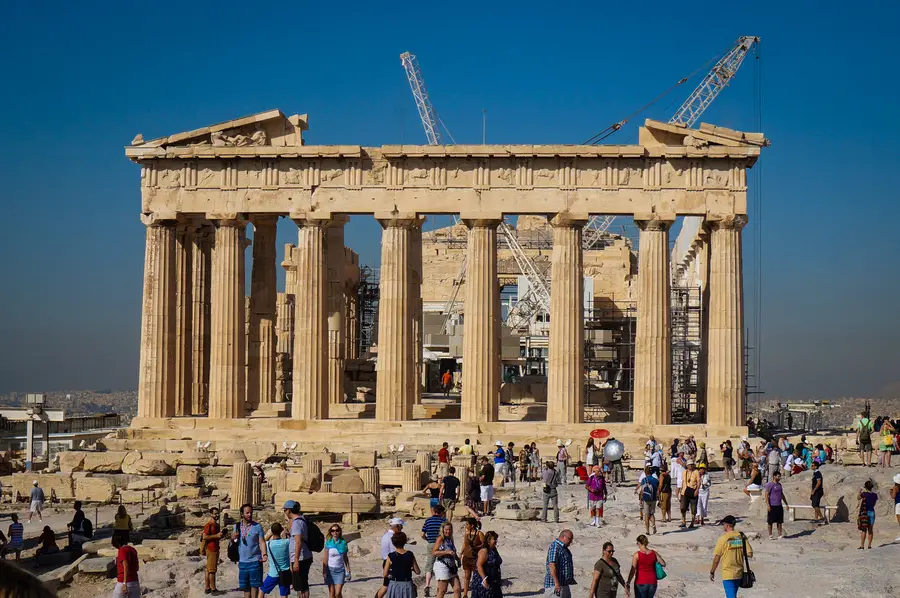
Erechtheum
The Erechtheum or Erechtheion is another of the main tourist attractions that visitors can appreciate at the Acropolis. It’s a temple made from Pentelic marble and it’s considered one of the legendary pieces of Greek architecture. It used to be a sanctuary devoted to Athena Polias, Erechtheus, and Poseidon. At present, visitors can visit the shrine to Athena after going through the eastern portico. The northern portico leads to the western cella and the Porch of the Caryatids can be found through the southern portico. These female figures are the most outstanding feature of the temple. The ones you see at the site are made of plaster. The originals are in the Acropolis Museum except for one that was taken by Lord Elgin to the British Museum.
Built-in Ionic architectural style, it is divided into two cellars, one dedicated to Poseidon and the other to Athena.
Temple of Athena Nike
Located in the SW edge of the Acropolis, the small and exquisitely proportioned Temple of Athena Nike will immediately catch your attention. It was designed by Kallicrates and built on white Pentelic marble between 427 BC and 424 BC. It’s a squarish building with four graceful Ionic columns at either end. The frieze and relief sculptures that you can see are replicas as the original were taken to the Acropolis Museum for preservation.
The Temple of Athena Nike was built in honor of Athena, the Greek goddess of wisdom and war. In fact, “Nike” is the Greek word for victory and it is the temple where the Ancient Greeks prayed for a victory against Sparta.
Theater of Dionysus
If you love the theatre, you can’t miss visiting the Theater of Dionysus. Located on the southern slopes of the Acropolis Hill, it’s devoted to Dionysus, the Greek god of drama. It was the main theater of the Athenians in Classical times and it’s believed to have been the first theater in the world. At the time, it could seat up to 17 thousand people.
Though it’s now ruined, visitors can still imagine what it looked like when actors performed the tragedies by Sophocles or Aristophanes on the stage. In fact, the ruins are impressive!
Visitors can climb up and sit in the semi-circle of marble seats ringed around the stage. The first seats, now roped for preservation, were limited to high-rank officials, priests, and military men. If you look carefully, you can appreciate some of their names engraved in the stone!
National Archaeology Museum
The National Archaeology Museum is considered one of the greatest museums in the world devoted to antiquities. Housed in a beautiful building in Neoclassical style, it welcomes visitors to an impressively large exhibition space where more than 11000 exhibits are in display.
The vast collection of the museum is organized into several collections: Prehistoric (Neolithic, Cycladic and Mycenaean periods), Sculpture, Vase, and Decorative Objects, Stanathos and Metallurgy.
The treasures make it easy for visitors to appreciate an interesting view of Greek art and history throughout various periods of time from the Neolithic era to the Classical periods. It’s a large and impressive museum that will probably take you more than a day to explore it completely but it’s possible to see its major highlights and, of course, joining one of its excellent guided tours is always a good idea!
Amongst the most important artifacts exhibited:
The Antikythera Mechanism: Discovered in the early 1900s, this device is considered the first analog computer in the world. What’s mindblowing about it is that it dates to the IV century before Christ!
The mask of Agamemnon: A stunning funerary mask made in gold dating back to the XVI BC. Scientists thought it belonged to Agamemnon before being dated even earlier.
The Kore and Kouros statues: Created by Aristion of Paros around 550-540 BC, they are considered one of the most important examples of Archaic art that can be seen today.
Bronze statue of Zeus: It was found in a shipwreck off the island of Euboea. It’s a bronze statue dating back to 460 BC. Scholars can’t agree whether it’s a statue of Zeus or Poseidon.
The Horse and Jockey: It was found in the same shipwreck as the other statue. It’s made of bronze and dates back to 140 BC. Its details are stunning: you can see the muscles flexing as the horse moves forward.
Museum of Cycladic Art
Located in the Kolonáki quarter, the Museum of Cycladic Art showcases an impressive permanent collection of more than 3000 objects that belong to ancient Greek art, the ancient art of the Cyclades, and Cypriot art dating from the IV century BC to the VI century AD. The collection is stunning: some of the marble figurines are lifelike in size! The statues feature nude people in an abstract or simple style and are said to have influenced artists of the XX century!
Most of the artifacts and artistic pieces found in the collection are marble pieces. They include plates, bottles, and standards.
The museum is located only three blocks from Syntagma Square and it makes a perfect addition to your visit to the square, especially after you watch the traditional Changing of the Guard that is held there daily. It is considered one of the best museums in Athens.
Explore the Plaka District
The Plaka District is one of the most popular tourist attractions in Athens. Located under the Acropolis, it spreads out to Syntagma Square. It’s famous for its ancient, winding, narrow streets, its green leaf canopies, stone walkways, and several cafés. It’s a great place to grab something to eat and do some shopping as well.

Odeon of Herodes Atticus
The Odeon of Herodes Atticus is a Roman-era concert hall raised in 161 AD. It was ordered by Herodes Atticus probably in memory of his wife. It used to have a room made from cedar wood and could seat 5000 people. Over the following 1700 years, the monument faded into the earth until the area was excavated in the late 1840s. The theatre was restored in the 1950s
It was a really impressive building at the time: 32 rows of seats around a semicircular stage. Its three-story exterior was decorated with four vast arches and statues of the muses.
The Odeon of Herodes Atticus is considered one of the most beautiful open-air theatres in the world and it is now the main venue for the Athens International Art Festival.
The Ancient Agora
In ancient times, the Agora was the marketplace, the center of everyday life. If you head to the north wall of the Acropolis or from the roads from the Areopagus you can have an impressive view of the Agora.
The north gate off Adrianou Street is probably the best place to enter the Agora. One of the most striking features of the Ancient Agora is the Stoa of Attalos. The Stoa of Attalos was originally built by King Attalos II and reconstructed in the 1950s and it may have been the place where Socrates was tried in 399 BC. Another important site in the Agora is the Temple of Hephaestus. It’s one of the best-preserved temples from Ancient Greece.
DON'T MISS ANYTHING!
FOMO - do you have it? Well there is no need to Fear On Missing Out here at Explore With Erin. Sign up to receive updates directly to your in box. I won’t spam you, but I do promise a whole lot of awesomeness. What are you waiting for? Join Me!
PS: We hate spam too, read our Privacy Policy here.

